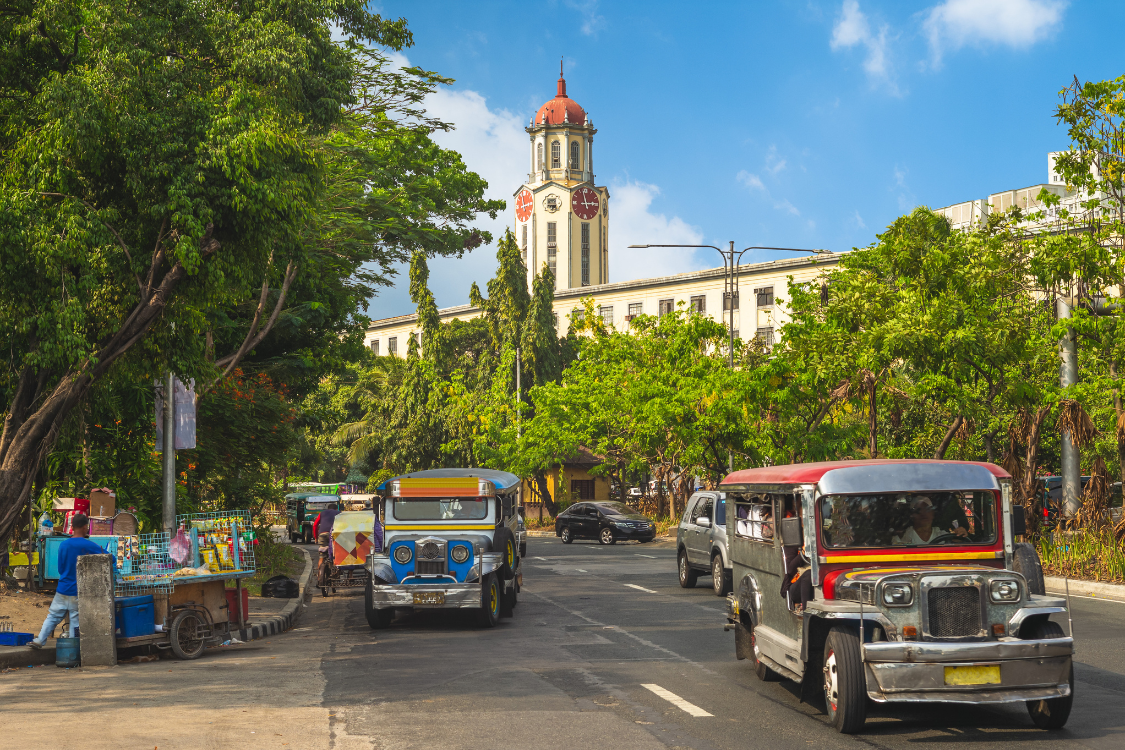Can one salary fit all in the Philippines? If you’re a U.S. hiring manager, ignoring how the cost of living varies by region could lead you to overpay or underpay your Filipino employees. For example, the cost of living in Metro Manila is much higher than in rural provinces, so local minimum wages and average salaries in the Philippines differ widely by region.
This cost of living Philippines salary guide breaks down how these regional differences shape salary expectations and labor costs. By the end, you’ll understand the key salary trends across the Filipino job market and know how to set competitive salaries in every region.
Why Cost of Living Matters When Hiring in the Philippines
Outsourcing to the Philippines is a strategic move for many foreign employers and foreign investors due to the country’s cost-effective labor and access to a highly skilled workforce. As one of the top outsourcing destinations in Southeast Asia, the Philippines continues to attract attention due to its English-speaking talent and adaptability to global demand.
To stay competitive in the evolving Philippine labor market, employers must align compensation with regional living costs and refer to reliable industry benchmarks. A wage that appears reasonable by U.S. standards may support a decent lifestyle in some cities but fall short in others. Aligning pay with local expenses can improve retention, job satisfaction, and employee engagement.
How local expenses shape salary expectations
In the Philippines, salary expectations are heavily shaped by basic living expenses such as food, rent, utilities, and transport. A typical Filipino family of five spends closer to ₱42,000–₱47,000 per month, according to data from the Philippine Statistics Authority (FIES 2021, updated for inflation), which informs what workers view as a livable median salary. For example, a salary of ₱12,000 will not meet the needs of someone whose cost of living totals ₱20,000 monthly. These economic realities directly influence salaries, especially for job seekers looking for long-term financial stability. Even roles like customer service representatives and healthcare professionals consider total expenses when evaluating an offer.
What U.S. employers often overlook about regional pay
Many foreign employers mistakenly use Metro Manila rates as the standard across the country. However, regional differences matter. The annual salary and salary insights from government data show that while Manila’s minimum wage ranges from ₱600–₱650/day, some provinces offer just ₱350–₱400. Applying a single rate can result in lower salaries that miss the mark in urban centers or unnecessary overpayment in rural areas. Understanding regional salary data ensures the offered job description aligns with market norms and avoids common pitfalls.

What Are the Average Living Costs in the Philippines?
Understanding living costs in the Philippines is crucial for every hiring manager aiming to stay aligned with local realities and global standards. Philippines average salaries and real-life expenses serve as benchmarks for fair salary negotiation across regions and industries. As foreign companies, international businesses, and global companies continue to explore the growing demand for remote jobs in the country, the importance of location-specific insights into salary levels and living expenses cannot be overstated.
A single person typically pends about ₱32,000/month, while a typical Filipino family may require over ₱80,000 to live modestly. These figures support more effective compensation packages, especially when attracting Filipino talent for in-demand roles like medical technologists, customer service representatives, or IT specialists across major cities like Metro Manila, Cebu, and other major cities
Common monthly expenses for Filipino workers
- Food: ₱8,000–₱10,000 (30–40% of income)
- Housing: ₱3,000–6,000 (10–15%)
- Transport & Mobile: ₱2,000–2,500
- Utilities (water/electricity/internet): ₱2,500–4,000
These categories shape expectations and help define competitive salary ranges and annual salary offers for roles in various industries. When BPO employees earn above the norm or foreign employers offer significantly higher wages, they influence broader hiring trends, raise the bar across the Philippine labor market, and impact the national employment rate. For employers seeking to remain competitive, integrating performance bonuses and flexible work arrangements also adds long-term value to their job offers.
Knowing these figures allows businesses to provide fair, market-aligned salaries that reflect actual living conditions in each city, making it easier to attract job seekers across various industries, from customer service representatives to medical technologists.
Knowing these numbers helps employers hiring remotely provide fair wage offers.

How rent, utilities, and transport vary across cities
In 2025, the cost of living in the Philippines varies widely by region, with Metro Manila remaining the most expensive area. Renting a one-bedroom apartment in the city center averages ₱17,160 per month, while in areas like Makati, studio units can cost ₱25,000 to ₱35,000 and two-bedroom condos up to ₱180,000.
In contrast, cities like Davao offer more affordable options, with two-bedroom houses renting for ₱25,000–₱30,000. Utility bills for an 85-sqm unit average ₱6,018 monthly, while internet and mobile plans range from ₱650 to ₱2,499.
These differences in housing and utilities, along with lifestyle costs, directly impact regional salary expectations and should inform pay decisions.
Living standards vs. minimum wage realities
A family of five in Metro Manila needs more than ₱25,000 per month to meet basic needs, based on PSA poverty threshold estimates and cost-of-living adjustments. Workers often aim for roles in business process outsourcing (BPO) or IT where pay is higher than government-set minimums.
Cost of Living Comparison: Metro Manila vs. Key Regions
Cost of living—and therefore salary expectations—can change dramatically depending on the city. To make better hiring decisions, it helps to understand how different regions compare in terms of housing, infrastructure, and pay norms.
Metro Manila – higher cost, higher expectations
Metro Manila, also known as the National Capital Region, is the most expensive area in the Philippines. Rent, food, utilities, and overall labor costs are significantly higher compared to other regions. As a result, workers in Metro Manila often expect higher than average wages. For example, a developer might expect ₱60,000–₱70,000 per month, while the same role in the provinces may command closer to ₱40,000.
Cebu and Davao – growing hubs with moderate costs
These cities have strong job markets and expanding outsourcing industries. While salaries are lower than Manila, expectations are still rising. Offering competitive pay in these areas is crucial to remain attractive to skilled applicants.
Provincial areas – lowest cost, but less infrastructure
Provincial cities have the lowest living costs. Rent and transport are cheap, and even a ₱10,000–₱12,000 monthly salary may be enough. However, there may be less internet access or local skilled professionals.

Sample Salary Expectations by Region and Role
To better illustrate how cost of living impacts salary expectations, let’s look at specific job roles and how their pay can vary by region. Different industries and positions have different market rates, but the regional pattern holds: Metro Manila tends to be highest, provincial areas lowest, with cities like Cebu and Davao in between. Below are examples of common outsourcing roles and what’s considered a fair salary for each in a high-cost city vs. a lower-cost region. These figures are approximate, but they offer a practical guide for U.S. employers to benchmark their offers.
Admin, design, dev, customer service – what’s fair in each city
The table below summarizes average salary ranges for a few roles, comparing a high-cost location (Metro Manila) with a lower-cost provincial setting:
| Job Role | Metro Manila | Cebu | Davao |
| Administrative Assistant | ₱15,000 – ₱18,000/month | ₱10,000 – ₱15,000/month | ₱10,000 – ₱12,000/month |
| Graphic Designer | ₱25,000 – ₱30,000/month | ₱20,000 – ₱25,000/month | ₱15,000 – ₱20,000/month |
| Software Developer (Mid) | ₱50,000 – ₱70,000/month | ₱40,000 – ₱50,000/month | ₱30,000 – ₱40,000/month |
| Customer Service Rep (BPO) | ₱20,000 – ₱25,000/month | ₱15,000 – ₱20,000/month | ₱13,000 – ₱18,000/month |
When higher pay is justified despite lower living costs
Paying above local averages can be a smart move, particularly when hiring top talent. A skilled developer or manager in a low-cost area may be highly competitive for roles based in Metro Manila or with international firms, so offering Manila-level pay can help secure their loyalty. Even with a premium, hiring in the Philippines is still more affordable than hiring in the U.S. It is also important to maintain internal pay equity. Large gaps between employees doing similar work in different locations can cause resentment. When the role is critical or the employee delivers strong results, compensation should reflect their value rather than just their location.

How Cost of Living Affects Retention and Satisfaction
Setting salaries based on local cost of living supports not only hiring but also retention. Fair pay improves satisfaction and loyalty while underpaying leads to frustration and turnover. For U.S. employers, balancing cost savings with fair compensation is essential for long-term team stability.
Paying above-local average improves loyalty
In the Philippines, offering slightly above the local average salary helps retain top talent. Well-structured, competitive compensation packages signal value and make Filipino employees less likely to job-hop. Regular benchmarking, fair salary negotiation, and raises that keep pace with inflation improve morale and long-term loyalty. Many Filipino workers value job stability and long-term growth, especially when benefits such as bonuses or tax benefits are included. International companies that pay fairly and recognize performance often see lower turnover and stronger commitment from their teams.

Risks of underpaying due to outdated assumptions
Underpaying based on outdated wage assumptions leads to high turnover and low morale. With rising costs and inflation, Filipino workers expect salaries that reflect today’s market. Offers based on old data may be rejected or resented, especially in competitive sectors like BPO and IT. If pay doesn’t keep up, even hired employees may keep looking. To avoid this, employers must regularly review salary benchmarks and adjust for inflation. What was fair in 2018 may no longer meet expectations in 2025. Staying current helps avoid constant rehiring and builds a stable team.
How inflation and lifestyle aspirations influence raises
Inflation reduces purchasing power, prompting Filipino professionals to seek regular raises to maintain their standard of living. Without adjustments, static pay leads to dissatisfaction and turnover. Many aim for long-term financial goals like owning property or supporting a family, so they expect steady growth in compensation. Employers can retain talent by offering performance-based raises, clear career paths, and additional incentives beyond the mandatory 13th-month pay. Proactive salary reviews are not just a cost—they’re an investment in engagement, loyalty, and better performance.

How to Set Competitive, Region-Smart Salaries
Crafting a competitive salary offer in the Philippines means considering both the role’s value and the region’s cost of living. Here are some tips and tools to help U.S. employers set region-smart salaries that attract talent and remain fair.
Tips for benchmarking salaries by role and region
To set fair and competitive salaries across different regions in the Philippines, U.S. employers should rely on up-to-date data and localized benchmarks. Here are essential tips to guide salary benchmarking by role and location:
- Use salary surveys and market platforms
Refer to tools like JobStreet, Glassdoor, PayScale, and SalaryExpert to gather salary insights by job title, location, and experience level. - Check government data
The Philippine Statistics Authority (PSA), DOLE, and NWPC provide reliable data on minimum wages and average compensation by region and industry. - Compare roles by city or region
Salary expectations vary between Metro Manila, Cebu, Davao, and provincial areas—benchmark each role based on its local context. - Adjust for skill level and experience
Entry-level employees earn much less than senior staff or certified professionals; refine salary ranges accordingly. - Update benchmarks regularly
Inflation, hiring trends, and labor market shifts can quickly make older data obsolete—review salary data at least once a year.

When to offer Manila rates outside Manila (and when not to)
Knowing when to offer Metro Manila salary rates to workers outside the capital is key to balancing cost savings with talent acquisition. Here are practical guidelines to help employers decide when Manila-level pay is appropriate—and when it’s not:
- Offer Manila rates for hard-to-fill or high-skill roles
If the role requires rare skills, certifications, or leadership experience, offering a higher rate can help secure top talent, even in lower-cost regions. - Match Manila pay for remote workers who deliver city-level output
When a provincial-based employee performs at the same level as peers in Metro Manila, adjusting pay for equity can boost morale and retention. - Avoid overpaying for entry-level or widely available roles
For positions like admin support or junior data entry, use local salary benchmarks instead of defaulting to Metro Manila standards. - Use tiered pay scales across regions
Implement a structure with different salary bands for NCR, key provincial cities like Cebu or Davao, and rural areas to maintain consistency and fairness. - Review pay offers based on regional talent supply
If a province has a strong pool of qualified professionals for a role, there may be no need to offer Manila-level wages to stay competitive.

Tools to calculate fair salary offers
To set fair and competitive salaries, U.S. employers must go beyond guesswork and use data-driven methods tailored to the Philippine market. Here are key tips for effectively benchmarking salaries by role and region:
- Use salary platforms and industry surveys
Refer to resources like PayScale, SalaryExpert, Glassdoor, and industry-specific reports to compare salaries by job title, location, and experience level. - Check government data
Consult DOLE, NWPC, and PSA for minimum wage rates and occupational wage statistics to stay compliant and understand baseline pay expectations. - Review job postings and consult recruiters
Look at active job listings on platforms like JobStreet or LinkedIn. Many include salary ranges that reflect current market demand. Local recruiters can offer additional context. - Account for experience and education
Pay varies widely depending on seniority and qualifications. Roles requiring certifications (e.g., CPAs or licensed engineers) usually command higher salaries. - Adjust for cost of living
Use city-based cost of living indices to calibrate salaries regionally. Be cautious not to underpay in lower-cost areas, especially for in-demand or highly skilled roles.
Pay Fairly, Retain Longer
Setting fair salaries in the Philippines requires balancing cost savings and employee value. Aligning pay with local living costs, role expectations, and individual performance helps attract strong candidates and reduce turnover. Avoid one-size-fits-all rates and reward employees based on their contributions, not just their location. Fair, well-structured compensation builds trust, boosts retention, and supports long-term team success.
Frequently Asked Questions
What is the average salary in the Philippines in 2025?
The average monthly salary in the Philippines in 2025 is approximately ₱44,800, equating to an annual salary of ₱537,000.
How much do BPO employees earn in the Philippines?
BPO employees in the Philippines typically earn between ₱15,407 and ₱45,284 per month, depending on their role and experience.
What is the minimum wage in Metro Manila?
As of July 17, 2024, the minimum wage for non-agricultural workers in Metro Manila is ₱645 per day.
How do salaries in the Philippines compare to other countries?
The average annual wage in the Philippines is approximately USD 5,129, which is significantly lower than countries like the United States (USD 60,200) and the United Kingdom (USD 42,800).
What are common benefits included in compensation packages in the Philippines?
Common benefits in the Philippines include paid annual leave, parental leave, workers’ compensation insurance, paid sick leave, and mandatory contributions to funds like SSS, PhilHealth, and Pag-IBIG.
Reference
- Department of Labor and Employment – Institute for Labor Studies. (n.d.). Home. https://ils.dole.gov.ph/home
- Magadia, C. (2025, March 22). What does cost of living look like in the Philippines in 2025? Daily Tribune. https://tribune.net.ph/2025/03/23/what-does-cost-of-living-look-like-in-the-philippines-in-2025
- Ramos, M. M. M. (2020, September 1). PHL slips in global outsourcing ranking; Davao out of top 100 list. BusinessWorld. https://www.bworldonline.com/editors-picks/2020/09/01/313958/phl-slips-in-global-outsourcing-ranking-davao-out-of-top-100-list/
- Rosel, T. (2024, June 30). NCR minimum wage earners to get P35-daily wage increase starting July 16. Manila Bulletin. https://mb.com.ph/2024/7/1/ncr-minimum-wage-earners-to-get-p35-daily-wage-increase-starting-july-16
- The Philippine Star. (2018, June 8). NEDA: Family of 5 needs P42,000 a month to survive. https://www.philstar.com/headlines/2018/06/08/1822735/neda-family-5-needs-p42000-month-survive




